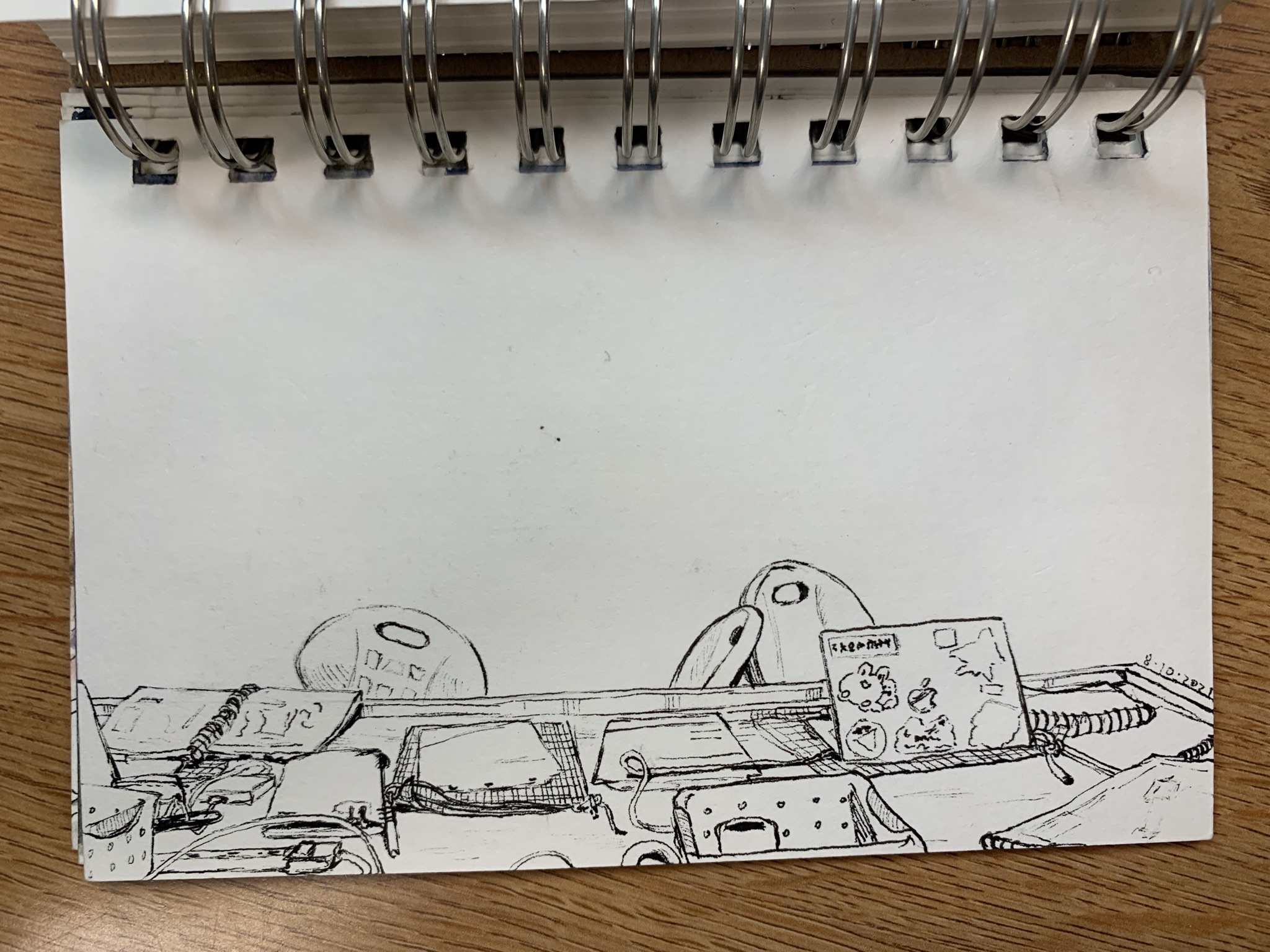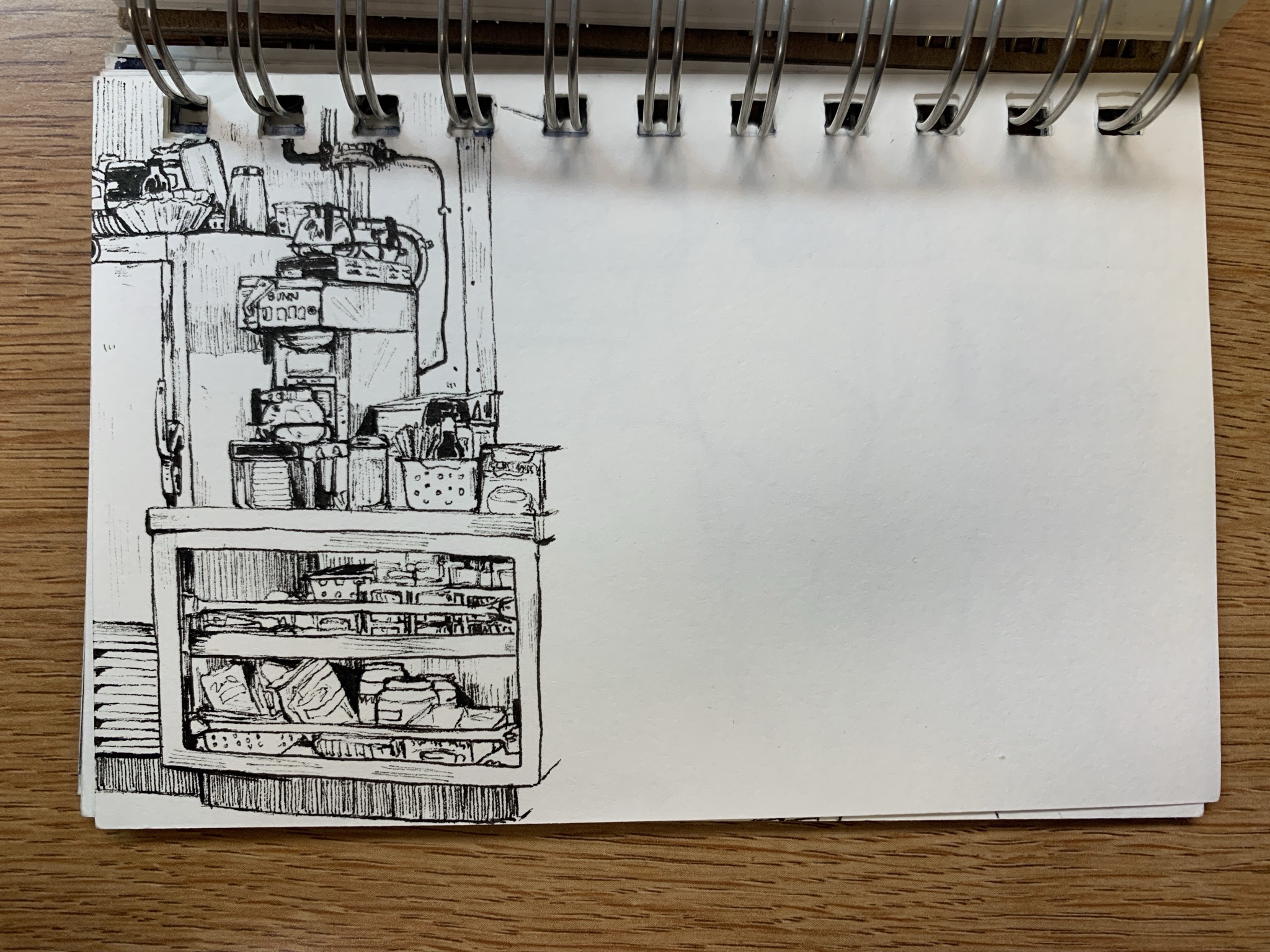Science communication can take many forms, ranging from songwriting and improv to visual art and video games. Elise Littell, a senior in the UW School of Oceanography, started creating scientific comics after experiencing difficulty concentrating during online lectures, and was later featured in the student journal FieldNotes. We sat down with Littell to learn more about her inspiration for this creative endeavor.
Q: What led you to create oceanography comics?
A: I was really interested in the crossover between art and oceanography because I naturally gravitate towards art. I transferred to UW from an art degree. Over the course of online learning, I became more interested in non-traditional forms of scicomm and science outreach because I have issues concentrating on things like online lectures. Using comics, I was able to convey high-level scientific information that anyone could read and understand using a combination of words and images, starting with a comic strip about Lignin phenols.
Q: What’s your process for creating these comics?
A: I start with what I need the comic to be about, so I’ll learn about what I’m going to be putting into the comic. I start with a Wikipedia overview, then go through and identify the most relevant or interesting pieces of information. Then I’ll do a literature deep dive and try to collect five different sources until I feel comfortable with the topic. From there I’ll script it out, and I’ll make sure to talk to my less science-minded friends to see if it makes sense and is clear. I’ll broadly outline pages and build a mental storyboard while doing this, and start sketching out the comics next to the words. Once this whole process kicks off, I tend to work very fast and very single-mindedly. Once I start I can’t stop — I’ve even plastered reminders on my computer to take a break every once in a while!
Q: Why did you start creating comics?
A: I have trouble watching videos, especially if it’s for an assignment. On top of that I grew up reading a lot of comics, and reading and drawing manga. The static format really appealed to me — being able to spend as long as you want on a single page. I like that sequential format. On the creation end, I enjoy putting in a lot of details into my comics.
Q: What drew you to oceanography?
A: I started taking oceanography classes after I transferred to UW from a community college. I started from scratch in terms of oceanography, but I had helped friends study for oceanography courses when I was working on my art degree in traditional art with a focus on painting and figure drawing.
I have always adored the ocean. I moved to Seattle from Minnesota, and seeing water everywhere was so different for me. We took a bunch of really cool field trips in middle school and high school to Golden Gardens and Alki beach to learn about the sea creatures and tide pools. I didn’t realize that there was a whole field of study of oceanography until later on, and I think it’s wild how wide the field is. That was extremely cool to me, especially since I enjoy chemistry.
Q: What are you hoping to do after you graduate?
A: I have a handful of career interests. I want to be a lab tech because I truly enjoy that work. I’m currently working as a student assistant in Paul Quay’s lab extracting inorganic carbon from water samples. Here, I’ll take water samples, bubble them with helium gas and phosphoric acid, and send them through tubes chilled with liquid nitrogen and an ethanol-dry ice mix to strip inorganic carbon out of the water. Then it will be run through a mass spectrometer to see different measurements throughout the water column across various sites. This can help us keep track of carbon in the ocean over time — which affects ocean acidification — as we visit sites over and over again as well as pollutants. I’ve also been looking into visual outreach — I’m not sure if I can build a career on it, but I found an artist residency that gives grants to work with scientists that can build a project.
I went on the VISIONS cruise this summer as an artist. My goal was to create a visual diary of some places on the cruise as well as draw some things from the van. My aim is to have a big painting and some of the smaller paintings as a small gallery show.




